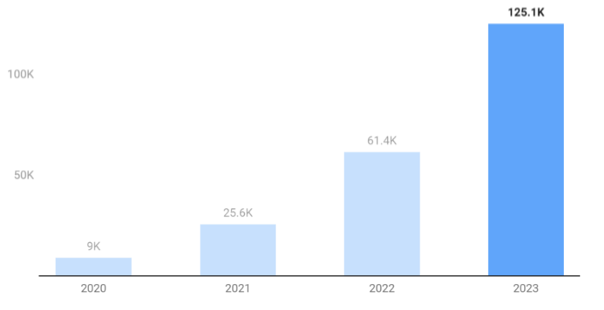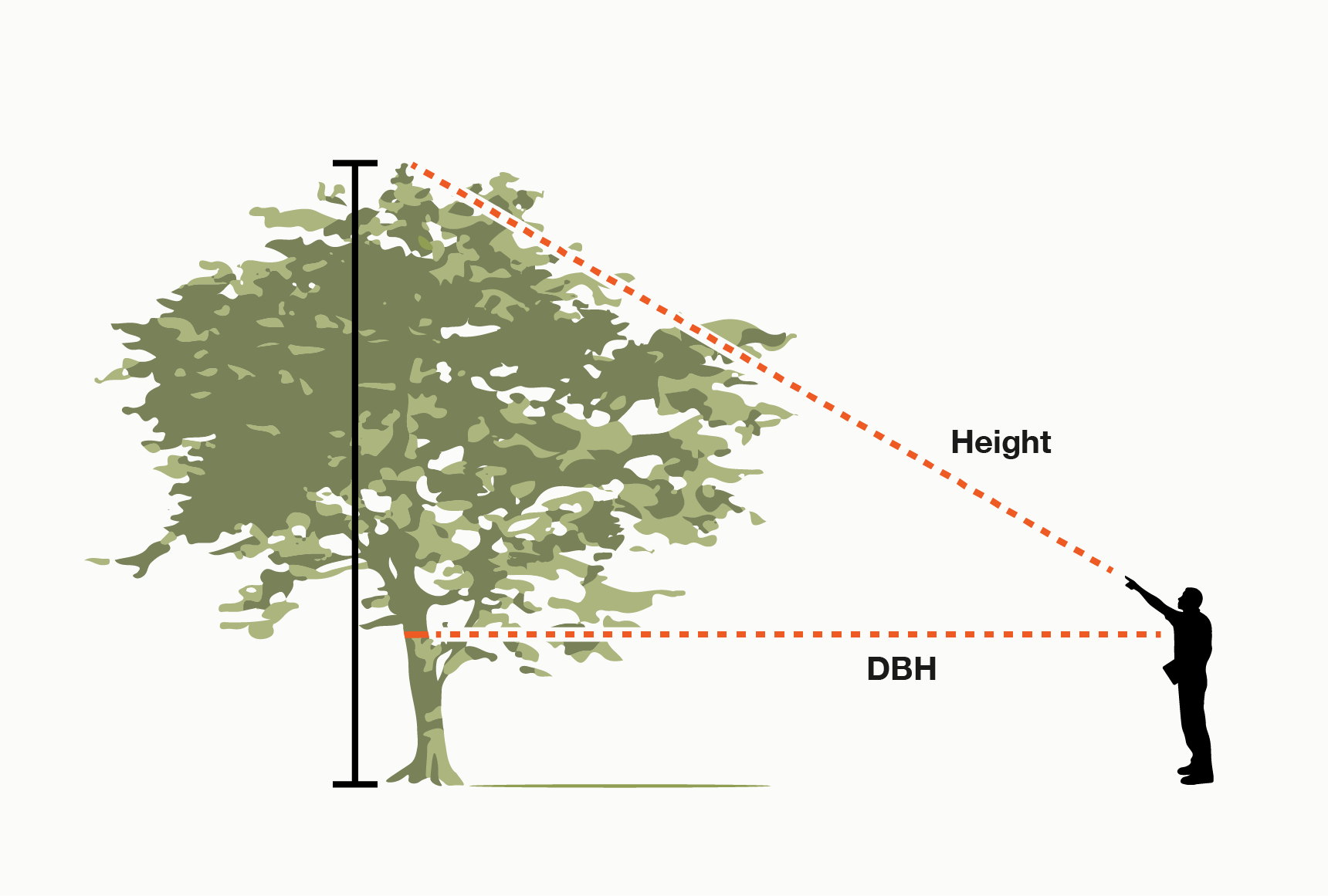In 2024, HAMERKOP had 3 interns join us and go on to become full time members of the team. We asked them each to write about their experience.
Maëna Raoux
Arriving at HAMERKOP: a search for integrity in carbon markets
When I joined HAMERKOP Climate Impacts as an intern, I had just completed the final modules for my master's program in Climate Change Management and Finance at Imperial College London. I had moved to London for this program, and it required a work placement to complete the degree.
Prior to my master’s, I had spent over a year and a half analysing corporate sustainability strategies and commitments as a sustainability analyst at EcoVadis in Paris. That role had given me a front-row seat to the good, the bad, and the greenwashed in corporate climate efforts and when it came to carbon markets, I wasn’t really sold. The market’s mechanisms, the permanence of nature-based solutions (NbS), and the motivations of corporate players investing in these markets all raised questions for me. Were carbon markets genuinely effective in mitigating climate change? Were they a necessary pathway to achieving global net-zero ambitions, or merely a tool for corporates to improve their reputations with minimal substantive change? My scepticism stemmed from some of the challenges I had observed and learnt about the fragility of permanence in NbS projects and the risk of greenwashing and over crediting that has loomed over the market. While not new, these critiques are particularly relevant and made me want to experience the industry and market firsthand. I soon realised I wanted to work in an environment where I could engage critically with carbon markets.
As an organization that does not tie its payment structure to carbon credit generation and can therefore provide advice based on a project’s quality and the market’s direction, HAMERKOP stood out to me. I considered their independence as essential to ensuring that my work would not only be meaningful but also allow for the kind of nuanced, critical engagement I was seeking. I also recognised that in an environment where carbon markets are being scrutinized, the availability of technical and science-based advice on what constitutes high-quality and high-integrity credits, is more important than ever. This is exactly why I was eager to join HAMERKOP.
Working at HAMERKOP: gaining insights and developing new skills
My first day at HAMERKOP was very welcoming and the days that followed provided me with the time to learn and ask questions as I met with each member of the team individually, getting to know them as well as the work they were involved with. During this period, I was encouraged to ask questions, dive into the work at my own pace, and contribute to a variety of tasks. Some assignments were operational, while others involved direct client deliverables. Among the various tasks I was involved in, my favourite assignment was conducting due diligence for corporates interested in investing in carbon projects. This sometimes almost felt akin to detective work – uncovering potential risks and red flags while meticulously assessing projects’ carbon potential and socioeconomic impacts. I was particularly drawn to projects that went beyond carbon to deliver broader development benefits and incorporate local stakeholder consultation and benefit-sharing mechanisms into their design.
Parallel to my internship, I worked on my master’s final report, which examined the issue of permanence NbS carbon projects. Specifically, I analysed how existing buffer pools in the Voluntary Carbon Market (VCM) are inadequate in guaranteeing permanence and making the case for in-kind insurance as a potential solution. This research also developed my interest for robust monitoring, reporting, and verification (MRV) systems, particularly those that include non-carbon metrics to ensure long-term project integrity.
HAMERKOP also helped me develop my understanding of geospatial analysis – an area I had always appreciated but never had the chance to explore practically. In fact, various projects that I have been working on directly demonstrate the relevance of remote sensing techniques in understanding the land use and land cover change (LULC), monitoring deforestation and degradation rates, but also as a tool to estimate biomass and carbon stocks by analysing parameters such as vegetation cover, tree height and tree density. I have particularly enjoyed being immersed in an environment where I am constantly learning and being exposed to new challenges that are key to resolve to ensure the development of high impact and high-quality carbon projects.
As my internship has come to an end, I am now excited to join HAMERKOP’s full-time team. The past months have not only deepened my technical expertise, especially in NbS projects and carbon metrics, but have also given me a much more nuanced perspective on carbon markets. While my initial scepticism hasn’t yet fully disappeared, it has evolved into a more balanced outlook, informed by hands-on experience and a deep appreciation of carbon markets’ complexities. I now look forward to further developing my understanding of NbS projects by learning alongside my colleagues who are experts in this field.
Solène Kechavarzi
My Internship Experience at HAMERKOP
When I first joined HAMERKOP as an intern, I knew I was stepping into a world that was both exciting and unfamiliar. Coming from a background in Biological Sciences, with a specialization in Biodiversity and Conservation, I had always been passionate about environmental sustainability. However, my experience had primarily been rooted in academic research, and the practical application of climate impact mitigation through carbon projects was entirely new territory for me. Over the course of my internship, I gained invaluable insights into the intersection of environmental science and business, and I am deeply thankful for the opportunity to learn and grow within such a dynamic organization. Working within this framework, I was able to see firsthand how environmental and climate goals can be translated into measurable outcomes that benefit both communities and ecosystems.
One of the most memorable aspects of my internship was the opportunity to travel to Douala, Cameroon, to participate in a mangrove restoration project. This experience proved to be both challenging and rewarding, as it combined fieldwork, data collection, and environmental analysis. Alongside a dedicated local team, we conducted a carbon forest inventory the mangrove ecosystem of the Wouri estuary. This process involved measuring tree parameters (diameters at breast height and height), assessing species composition, and estimating biomass to establish baseline data for future carbon credit calculations. Being immersed in the mangrove environment not only deepened my understanding of carbon accounting methodologies but also reinforced the importance of preserving these vital ecosystems.
The field experience in Cameroon was particularly impactful because it illustrated the practical steps involved in translating science into scalable projects. I was able to witness how local stakeholders and conservation professionals collaborate to restore degraded landscapes while simultaneously creating economic opportunities through carbon credit markets. It was inspiring to see how science-based solutions can drive meaningful environmental change.
Throughout my time at HAMERKOP, I was continually impressed by the dedication and expertise of the team. The level of commitment to sustainability and technical rigor is evident in every project. The mentorship I received was instrumental in helping me navigate the complexities of carbon certification processes, field methodologies, and data analysis. I am especially grateful for the patience and encouragement that my colleagues provided as I transitioned from a more academic background to working in such a results-oriented setting.
This internship has been an incredible learning experience. It has showed me that protecting biodiversity can go hand in hand with addressing climate change and fostering sustainable development. It has also given me a newfound appreciation for the role of carbon markets in promoting environmental stewardship.
I leave this experience with a deep sense of gratitude and excitement for the future. To anyone considering an opportunity with HAMERKOP or in the field of carbon projects more broadly, I can confidently say that it is a path worth exploring. The work is not only impactful but also deeply fulfilling. I am excited to continue working with HAMERKOP in the future, where I have started a full-time role as an Associate Consultant.
Mikael Minten
My Internship Experience at HAMERKOP
Starting my internship with HAMERKOP was both exciting and daunting. Having studied Environmental Science and Ecology in Edinburgh, I had a solid grounding in environmental issues but little knowledge of carbon markets. The role at Hamerkop seemed like the perfect opportunity to bridge that gap and learn about an industry that was both complex and hugely important.
I arrived at the HAMERKOP during a particularly hectic period. The team had just taken on several large contracts, and everyone was deep in work. It was a bit overwhelming at first, but at the same time it was also great—I was immediately thrown into real projects where I could apply what I had learned in my studies.
In my first few days, I had one-on-one meetings with everyone in the office, learning about their backgrounds and roles. These chats, along with lunchtime conversations (often outside, thanks to the summer weather), helped me settle in quickly. The team was incredibly welcoming, and within a couple of weeks, they officially welcomed me with a trip to the pub—always a good sign!
As things calmed down slightly, I was able to branch out into different aspects of the business and get a broader understanding of carbon markets. There was a running list of activities I could take on, which gave me a great starting point. Three of my key tasks were:
Updating the Carbon Handbook: With guidance from the team, I worked on updating our Carbon Projects handbook, the last version of which came out in 2021. This included revamping some of the outdated material and enhancing clarity to make it more accessible and easier to navigate. The handbook is used as a broad introduction to carbon projects, so diving into it really helped me understand carbon market fundamentals.
Updating Carbon Standards for Blog and LinkedIn Posts: This was also a follow-up on a series of blog and LinkedIn post we had released in 2023 where we shared insights from data collected on over 65 carbon standards. I was amazed at the amount of standards that existed—each with its own unique approach to the carbon markets. The update required extensive outreach—following up with various organisations via LinkedIn and email to ensure we had the most up-to-date information.
Working on Geospatial Analysis: Another key role I took on was contributing to the organization’s geospatial analysis for many of our nature-based project. This gave me valuable insight into how remote sensing is integrated into project design and planning. Along the way, I became more proficient with tools like QGIS, EarthBlox, and R while exploring the wide range of available datasets. One of the biggest learning experiences was using remote sensing to conduct a stratification analysis—dividing a mangrove forest in Cameroon into high and low biomass areas based on remotely sensed data.
Beyond these main projects, I dipped in and out of various other workstreams, including emission reduction modelling, drafting and designing projects, and project due diligence.
The internship was a steep learning curve, but it was exactly what I had hoped for—real, applicable experience in an area that is rapidly growing in importance. Looking back, I feel incredibly grateful for the opportunity to work with such a knowledgeable and supportive team. It was a brilliant introduction to the world of carbon markets, and I’m excited to see where this experience takes me next!








































